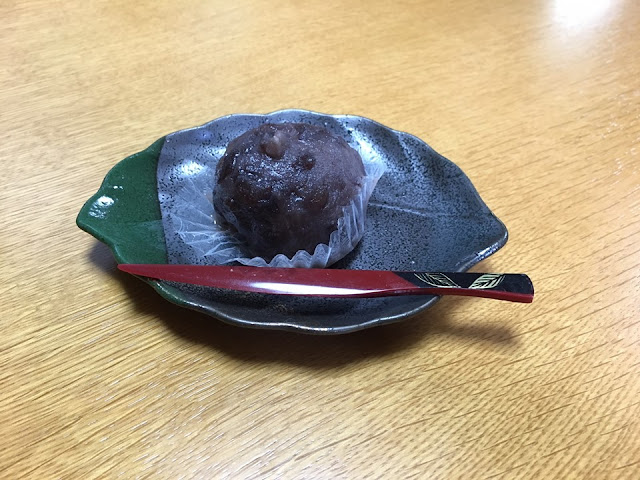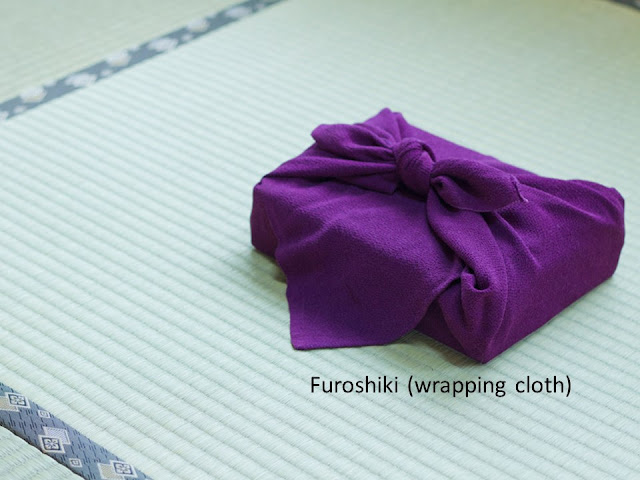Contents 目次
1. Nishijo village and Nishimatsu family、西条村西松家の周辺(Part 1)
2. Life in river island and river improvement、治水と輪中の暮らし(Part 1)
3. Activities as a village head、庄屋としての活動(Part 1)
4. Necessities of life (food, clothing and
housing) and annual events、衣食住と年中行事(Part 2/this article、この記事です)
5. Diseases and death、病気と死亡(Part 3)
6. Women and helpers、女性たちと奉公人(Part 3)
7. Fun concerning hobbies、趣味の世界(Part 4)
8. Village budget, cost of living and price
fluctuation、村入用・生活費・物価(Part 4)
Chapter 4: Necessities of life (food,
clothing and housing) and annual events、衣食住と年中行事
1.Clothing、衣服
The
village head “Gonbei”, who wrote the diary and recorded his life, run a pawnshop, so villagers pawned a kimono wear to the
shop. Its record made clear what villagers dressed. They had not only hemp or
cotton kimonos but also silk ones which are more expensive. When Gonbei’s
younger sister got married in 1806, silk socks were presented as a gift. They
were not so shabbily dressed.
Scene Sumida River at Mukojima, Tokyo (in the late 19th
century), https://digitalcollections.nypl.org/items/510d47d9-c923-a3d9-e040-e00a18064a99
金融業もしていた庄屋の西松家への質入れの内容から、村人は、麻と綿だけでなく、絹の着物も着ていたことが明らかになっています。この日記を書いた権兵衛の妹が嫁入りした1806年には、絹の足袋が送られています。リッチでだったのですね。
2.Eating habits、食生活
Meals on festival day or ritual day、ハレの日の食事
The
author analyzed 79 meals which were served on special days. She checked the
characteristics of events and materials.
Major
ingredients were vegetables because we Japanese didn’t eat beef and pork back
then; it was influence of Buddhism. Fishes (crucian carp, eel, clam and dried
bonito fish) and chicken were also cooked. In the case of memorial service, we
didn’t eat meat except for kamaboko (steamed seasoned fish paste). Manju
(bun with bean-jam) and senbei (rice cracker) were served after the
dinner.
日記に記載されたハレの日(婚礼などの祝儀、法事、役人のもてなしや寄合のような庄屋行事、講などその他の行事)の食事を行事別、材料別に分類しています。79回分の食事に対する丁寧な分析で、頭が下がります。
メニューは、さまざまな野菜料理が中心でしたが、魚介(ふな、うなぎ、蛤、なまり節)や鳥料理もありました。牛肉や豚肉は食べない時代でした。但し、法事の魚介は蒲鉾のみ。また、菓子はまんじゅうとせんべいでした。
Meals on ordinal days、普段の食事
Those
were not recorded in the diary, so the author checked account books in 1853 and
1854.
The family bought fish including abalone and
squid from a fish shop in Ohgaki. It's good! Although farmers usually made
their food by themselves, they bought vegetables such as carrot and lotus root.
They also bought okara (soy pulp, byproduct of tofu), aburaage (fried tofu), white
miso paste, salt, cooking oil and so on. The author pointed they didn’t eat
less fish on ordinal days.
The
author assumed that meals at that time were similar to ones until 1950s. I know
the meals which were cooked by my grandmother. To tell the truth, I didn’t like
them because there were little meet and mainly simmered vegetables. However, I
like them more than oily meet foods such as cutlet or steak. Those are healthy
meals.
普段の食べ物は、日記には書かれないので1853年と1854年の「雑費帳」で追っています。ペリーが来た年ですね。
魚は大垣の魚又がご贔屓で、いか、鮑などが記載されています。農家ですが、人参や蓮根などの野菜、おから、油揚げ、白味噌や塩などの調味料や油も買っています。ハレの日に比べると魚介が少ないのが特徴です。
筆者は、「昭和30年代頃までの食事が、江戸時代の食事の延長であったことを思わずにいられない」と書いています。私の世代では、おばあちゃんが作ってくれたご飯ですね。ハンバーグやカツがなくて、野菜の煮物中心でした。正直、嫌いだったのですが、今は、脂っこい物よりも煮物が好きになっています。体にやさしい料理ですね。
Sake (alcohol)、酒
This
topic is also described elaborately. Sake was frequently used gift. The price was
around $40 per 1.8 litter at current value, but branded sake such as Hagoromo
were more expensive and used as a formal gift. Sake coupons were spread.
Gonbei liked drinking, and other village heads
also liked. Therefore, sake was sure to be served at their meeting.
Talking about tea, they bought a lot from
merchants of Kyoto and Shiga prefecture.
酒切手 Hirakata-shuku Kagiya Museum
枚方宿鍵屋資料館
酒の記述も詳しいです。酒は贈答用として最も多く用いられ、一升が約170文(約4000円)でした。しかし、羽衣や瀧津瀬というブランド品はお高く御進物になりました。酒切手(ビール券に相当)も利用されました。
権兵衛は酒を好みましたが、他の庄屋も酒豪が多かったようで、寄合では必ず出されたということです。
なお、茶の消費も多く、近江や京都の商人から買っていました。
3.Housing、住環境
The
floor plan of Gonbei’s house is shown. The area was around 160 sqms and it was
a one-story building.
On
the other hand, the author speculated that the area of ordinary farmers’ houses
was from 30 to 70 sqms from the village register. Those are equivalent to the
area of recent condominiums, but working space was included. Their houses with
a thatched roof equipped tatami room, however it was probably only one.
Interestingly
enough, the specification of houses was important because it represented the
position of farmers: village head, officer and ordinary farmer. A poor farmer
renovated his house and made a tile roof and eaves. He was ordered to remove
them. It was important to keep dignity to govern the village.
Btw,
when houses were broken by an earthquake, they asked han (local government) to help them. The
han supplied 60 kgs of rice to a family in serious difficulties.
In
the Edo period, there were little public support, so people relied on neighbor’s
support and self-support. However, the han helped residents in difficult case
like this. In the 2nd chapter of this book, the han did embankment
works which was too difficult to do by farmers. It was a common system before
the modern period.
House of a village head in northern Japan Michinoku Folklore Village & Kitakami City Museum、みちのく民俗村と北上市立博物館
権兵衛の家の間取りが載っています。建築面積が50坪ぐらいの立派な家でした。
一方、一般の百姓の家について、宗門改帳から、10~20坪の茅葺きだったと推定しています。33~67㎡ぐらいなので、狭めのマンションと同じぐらいですね。でも、作業所込みです。また、畳敷きはあっても一間程度と考えられる、と記載されています。
興味深いのは、百姓は身分に応じた拵えが大切で、水呑百姓が庇や瓦屋根を作った時には、村役人から取り払うよう命じられました。身分を固定させ、威厳を保つことが村を治めるために大切なのでですね。
ところで、大地震で家々が潰れた時は、役所へ救難を求め、極難渋の者に限り米一俵を手当てするとの通知を受けています。治水工事に続いて、公助の登場です。江戸時代の農民は、自助と互助で苦難を乗り越えましたが、どうにもならない時は公助に頼るという仕組みのようです。
4.Rites and gifts、儀礼贈答
5.Annual events、年中行事
Holidays、村の休日
Holidays
were New Year holidays, Bon rite, Sekku (seasonal festivals)
and shrine festivals. Additional holidays were determined by village officers
and announced. The number of holidays was around twenty-five a year,
which was a bit smaller than average number of Japan.
Each
holiday had its particular event, for example burning New Year decorations. The
distinctive rite was Yutate-gyouji in which people boiled water (Yutate),
soaked a bamboo branch and sprinkled hot water drops of leaves to the
representative's head in order to purify him.
There
was also a holiday which depended on weather. After good weather continued,
they took a day off because agricultural work was going well. It’s a good day.
定例休日は正月、盆、五節句(1/7,3/3,5/5,7/7,9/9)と祭礼(8/16,16)でした。村単位の不定期な休日は、村役人が決めて、村内に触れを出しました。合計で年間約25日であり、全国的に見ればやや少ない日数です。
休日の行事は、他村と同じく、正月の左義長、太子講、鍬祭り、虫送り、湯立と続きますが、災害などによって臨機応変に行いました。6月16日頃の湯立行事は特徴的で、神社で、笹の葉で熱湯を代表者の頭上にふりかけて浄めます。これは、古代の盟神探湯(くかたち)が起源といわれています。
また、気象に応じた休日として、潤ひ休日がありました。これは、天気が順調で農作業がはかどったときに、労働をねぎらう休日。いい日ですね。
Entertainments in the village、農村の娯楽
There
were many performances in the river island villages. Those were held in grounds
of shrines, temples, and so on.
Sumo wrestling matches were recorded for seven
times, theater performances for five times, kyougen comical performances
for five times, horse racings for four times, joururi music performances
for two times, manzai dance performances for two times and other six
kinds of performances.
Firework
show was popular even in winter, so it was held all year round.
The
lord tried to control entertainments in order to make farmers work hard.
However, it didn’t work. As the rising of agricultural productivity, people had
leeway to enjoy their lives. They also went to big festivals which was held
outside the river island: Ohgaki festival in April and Tsushima-tennou festival
in June.
Firework festival、Nagano City Museum、長野市立博物館
Reference: Ogaki festival/大垣まつり Ogaki Festival|大垣・西美濃観光ポータル「水都旅(すいとりっぷ)」 (ogakikanko.jp)
Tsushima-tennou festival/津島天王祭 尾張津島天王祭 津島市公式ホームページ (tsushima.lg.jp) (in Japanese)
輪中の村々では興行がたくさんあり、社寺の境内などで開かれました。
主なものとして、角力(7回、文化7~嘉永7)、ちょんがれ(1回、ちょんがれ坊主が錫杖・鈴などを手に、卑俗な文句を、半ば踊りながら早口にうたった大道芸)、万歳舞(2回)、操人形(1回)、芝居(5回)、曲馬(1回)、狂言(5回)、獅子舞(1回)、花軽業(1回)、浄瑠璃(2回)、馬かけ(4回)、太々神楽(1回)が記載されています。
花火は絶えず上げられ、夏に限らず冬も人気がありました。
領主は農業に精を出させるために遊興を取り締まりましたが、「ほとんど形骸化している」と書かれています。生産力が上がって豊かさになり、遊ぶ余裕がでてきたのですね。
輪中の外の大垣祭り(4/15)、尾州津島天王祭り(6/14,15)にも出かけて楽しみました。
Annual events in Gonbei’s family、西松家の年中行事
January
Gonbei’s
family went to the village shrine at first. Then, Gonbei greeted villagers, samurai
officers and a boatman. They lived in the river island; they sent money (around
$8) and rice or wheat as the New Year gift to a boatman.
They
held a Buddhist memorial service of their family in this month. Sixty to
seventy people who were mainly relatives were invited. They cooked 100 kgs of
rice, because they donated to poor people simultaneously. However, it was not
enough at one time, so they handed 27 kgs of rice to eighteen villagers. It’s a
big event.
February
They
boiled soybeans to make miso paste. They also maintained the house because it
was an agricultural offseason.
March
They
went to see flowers like sakura cherry blossoms and enjoyed
picnic. Gonbei started taking care of chrysanthemum which bloom in autumn. It was
his important hobby.
Sakura viewing:江都名所、広重、https://dl.ndl.go.jp/info:ndljp/pid/1304968
April
Agricultural
season starts. In May, six or seven people were engaged in the rice planting
for several days which was the hardest work. I think less than a week was
relatively short term. Anyway, after hard work, they had a holiday and a
party. Sake, udon noodle (made from fresh wheat) and cakes were
served. They appreciated their pains each other. At the party called
“Sanaburi”, 15 liters of sake were served and 18 liters of flour was consumed
to make udon noodle. Gonbei wrote quantitively, so we can image
properly.
Rice planting、Nagano City Museum
Udon noodle and soup for dipping、池袋・うちたて屋
May
Boys’
festival is held. The first son of Gonbei was presented with twenty-five flags
(2 -4m long) and so on at the first festival. It’s so luxurious.
June
They
dried clothes, books and documents in order to avoid insect damage. Grains were
also dried and were checked damage by insects or rats.
July
Bon rite is held
to pray for their ancestors. People visited each other, and gave gifts such as
noodle, saba-fish, folding fan, paper and so on. I’m not sure why saba-fish was
a summer gift, which is easily go rotten. Before the rite, people cleaned up
which is called “Susu (soot) – haki (sweeping)”.
Visit during Bon season(盆礼), the 13th
to the 16th of July、NationalMuseum of Japanese History(3/3)
August
The
village festival was held at Shirahige shrine; it was a holiday. After that,
harvesting started. They had custom to celebrate the completion of it. They
made sweet cakes “Ohagi” (the photo below). It’s a good practice to take a rest
and enjoy pastime together soon after the difficult work.
September
They
offered new ears of rice to the shrine to appreciate the harvest of the year. It
was a vital event for them.
October
They
held the memorial service to Dharma who was a founder of Zen Buddhism. Mochi
rice cakes were delivered to their relatives who worshipped Zen.
Genzo
joined the memorial event to Basho who was a founder of a sect of haiku short
poetry. He held it with his companions.
Reference: Basho memorial museum
November
Genzo
was busy to pay rice tax.
December
Genzo gave year-end gifts which were sake, youkan (sweet bean jelly), socks, furoshiki (wrapping cloth, its photo is below) and so on.
https://publicdomainq.net/furoshiki-tatami-0006471/
On
around the 10th, they cleaned up (Susu-haki). Then, they renewed
shouji door paper, made mochi rice cakes for the New Year’s Day, paid salary to
helpers, paid debt, recovered loan and so on; those were routine practices in
the end of the year.
Shouji in a village head’s house in
northern Japan Michinoku
Folklore Village & Kitakami City Museum
The
author mentions these annual events and customs seemed to continue after Meiji
restoration in which the shogunate overthrown and the modern era started. People’s
lives changed slowly.
氏神様への初詣、村人との年頭、藩士への年礼、渡し場への年礼から一年がはじまりました。渡し場へは20~50文と米や麦を船玉として贈りました。輪中の村らしいですね。
1月に行う法事では、60~70人を呼びました。貧窮者への施しもするので、70升炊いても不足してしまい、村人18人には白米一升を渡したとのことです。スゴイ量です。
2月のはじめには、味噌焚きをしました。近村の地主も同じ時期に行うので、夏に行う吉野家(千葉県)とは違います。また、2月には家屋の手入れをしました。
3月になると「各地に花見に出かけることが多くなると同時に、秋に咲かせる菊の手入れ」が始まりました。権兵衛は庭造りに注力しています。
4月には農作業が一気に増えます。そして、5月からは田植です。「通常三、四日かけて行われる」といいますから短期集中型ですね。植え付けには毎日六、七人が当たりました。田植明けは、「揃って休みをとり、酒のほか手打ちの農上がりうどんや田植団子も用意して、互いの労をねぎらった」とありますから楽しい会です。さらに、「さなぶりと呼ばれる祝いのうどんを打つのに要する粉は一斗を超え、酒の量も八升から九升を準備した」とあります。この日記の良いところは、定量的な記載が多くて、実感が湧くことです。
5月には、節句の祝いもあります。西松家の嫡男の初節句には、幟25本(長さは八尺から一丈三尺まで)などが届いたといいますから豪勢です。
6月は、土用干しをし、衣類や帳面類だけでなく、穀物も干して虫や鼠の害をチェックしました。
土用干し(drying clothes)、金沢くらしの博物館
7月は盂蘭盆です。盆礼は、素麺、干うどん、青鯖、扇子、半紙が主な物でした。夏に腐りやすい鯖を贈るが意外です。11日か12日は煤掃(すすはき)をしてお盆を迎えます。煤掃は年末と盆前の二回行うということですね。
8月には祭礼があります。白髭神社は6/15と8/15が祭礼で、村の休日です。それが終わると収穫シーズンに入りました。鎌上げと称して、おはぎをこしらえて収穫の終了を祝う習慣がありました。一仕事終わった後の打上のようで、メリハリがあっていいですね。
9月中旬の行事、初穂は、稲穂をささげて、その年の収穫に感謝する祝いで大切に守られました。
10月には、禅家の行事「達磨忌」があり、禅家の親戚に「仏事餅」或いは「祖師餅」と呼ばれる餅を配りました。また、俳諧仲間で行う「芭蕉忌」も12日前後にありました。俳句は庶民の間に浸透しています。
11月は年貢の納期が迫ってきて多忙です。
12月、歳暮や寒中見舞には、酒、羊羹、足袋、風呂敷などが利用されました。煤掃き(10日頃)、障子の張り替え、餅つき、奉公人への給金の支払い、掛け取りや勘定の支払いをして一年が終ります。
「(これらの)多くは明治期以降も続けられたようである」と書かれてます。村では、明治維新で生活パターンが一変したという訳ではないのですね。
Previous post (Part1 of this article、この記事のパート1):
Rural society in the Edo period and
life of the village head (1/4)、庄屋日記にみる江戸の世相と暮らし (1/4)
Next post (Part3 of this
article、この記事のパート3):
Rural society in the Edo period and life of the village head (3/4)、庄屋日記にみる江戸の世相と暮らし (3/4)
















Comments
Post a Comment